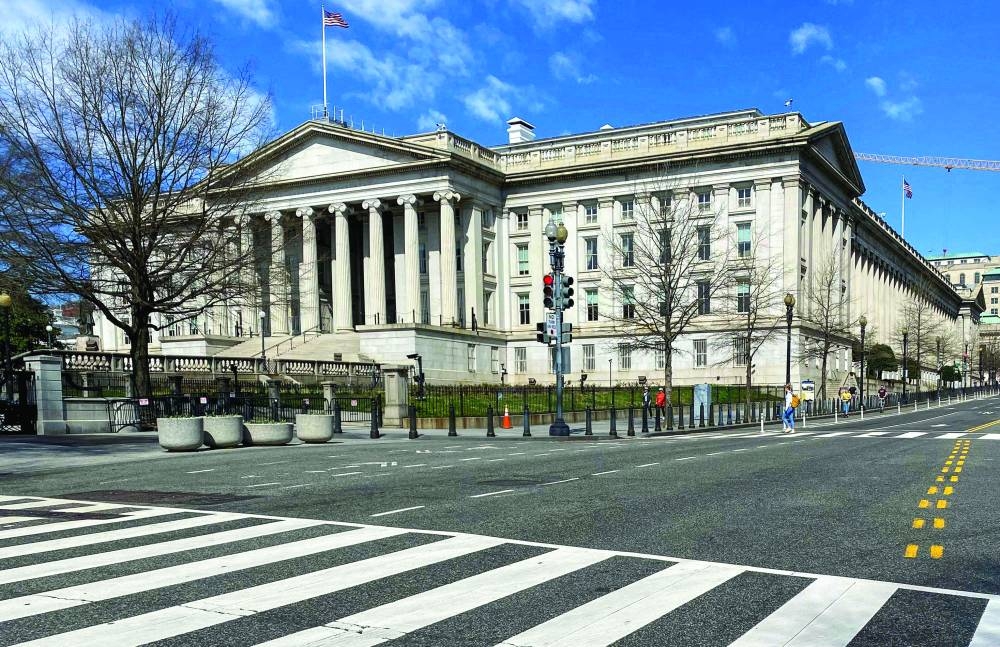US Treasury yields rose sharply, joining a global bond selloff as traders pared bets on deep interest-rate cuts from major central banks this year.
The benchmark 10-year yield rose nine basis points to 3.97%, while similar-maturity German bund yields jumped as much as nine basis points to 2.11%, the highest in more than two weeks. The equivalent UK rate rose 15 basis points. Shorter-dated Treasuries led the selling pressure, putting the Bloomberg Dollar Spot Index on track for its biggest daily advance in almost four months.
The moves reflect doubts that policymakers will deliver the extent of monetary easing that’s priced by money markets. While central banks have indicated that they’ve likely delivered the final hikes of this cycle, they will also be reluctant to give up the fight against inflation too soon.
“The market should probably have a bit more of a bearish tone going forward,” Emmanouil Karimalis, a rates strategist at UBS Group AG, said in an interview with Bloomberg TV. “The ECB and other central banks have not signalled the all clear.” US money markets priced around 150 basis points of Federal Reserve easing in 2024, about seven basis points less than at the close of last week. While the pace of hiring is moderating, a resilient labour market supports views that the economy will continue to expand in 2024, albeit at a slower rate.
For the European Central Bank, traders are betting on 158 basis points of easing this year, or about 10 basis points less than last week. While euro-area inflation has been in retreat, central bank officials see a risk that readings tick up in the coming months, and traders will be attentive to consumer price growth data for the region due on Friday. The conflict in the Middle East has also spurred fears over the oil price, which was rising yesterday.
The prospect of heavy new corporate debt issuance is also likely weighing on bonds, particularly after their strong performance ahead of year-end.
Analysis by Societe Generale strategists shows long-maturity yields tend to peak around the last rate hike before declining 100 basis points on average over the next year or so. At the end of 2023, bund yields slumped nearly that much in just two months, leaving bondholders with very little buffer to protect them from volatility.
“Unless the rally intensifies because of some near-term risk-off, we believe the extremely low unit price of duration risk will make it challenging for investors to happily swallow the new issuance,” the strategists wrote in a note.
While the dollar has rebounded in recent days, it’s likely to flip back to declines, according to strategists for Bloomberg’s Markets Live team. They see the Fed cutting rates more aggressively, and potentially sooner, than other major central banks.
Meanwhile sterling dropped against the dollar yesterday, suffering along with peers in the face of at least a temporarily resurgent greenback, while also being affected by the latest signs of slowing inflation in Britain. The pound was last down 0.7% at $1.2637, as a move up in US yields sent the greenback higher.

The US Treasury Department building in Washington. US Treasury yields rose sharply, joining a global bond selloff as traders pared bets on deep interest-rate cuts from major central banks this year.
